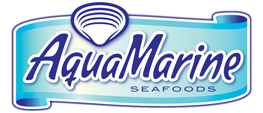FAQS
Commercial harvesting takes place all year round, but in order to ensure meat quality and yield the main harvesting period is from April to October. During low tide, clams are harvested manually with the aid of a rake. Nets are used to sort out the sizes that have reached commercial size while the undersized clams are returned to their natural environment to grow further. The width of the rake and mesh size used are regulated by the management organizations of this resource. The use of machines for harvesting clams is banned. The clams are bagged and loaded on to boats where they are checked, counted, weighed, and transported to markets or factories where they sold or further processed.
The harvesting or growing areas are close to the shore or inland waters adjacent to coastal development in ‘approved’ waters maintained and designated by Vietnamese state authorities. Site evaluations and water testing, are conducted to determine if waters are approved for growing and harvesting. Clams harvesters, processors and shippers are also licensed by the state regulatory agency. Samples of clams from the selected harvesting are collected and tested for pathogen microorganism, biotoxin, and chemicals before harvesting and transporting to the factory. Each and every bag of clams harvested must be properly tagged identifying the water/area from which they are harvested, this information is then maintained and updated by the transport service provider as well as the processing plant to ensure full traceability is achieved. Vietnamese Clams are from the Ben Tre fishery that have been MSC certified since 2009.
Clams are low in fat, high in protein, omega-3 fatty acids, and are relatively low in calories. Clams are also a rich source of healthful minerals and vitamin such as Iron, Selenium, Zinc and Vitamin B12. Vitamin B12 and Iron contribute to the formation of normal red blood cells and energy-yielding metabolism, while Selenium contributes to the normal function of the immune system.
Clams represent one of our nation’s most sustainable seafood resources. Natural production remains strong and exceeds demand, and farmed production is improving and expanding. Clams are a good example of a sustainable resource because they are dependent on clean and healthy waters, and are effectively managed at the local level by government agencies. They are an important part of a healthy ecosystem because their active filtering can help improve or maintain water quality. Vietnamese Clams are from the Ben Tre fishery that have been MSC certified since 2009.
Clams can be eaten as an appetizer or an entrée. Our cooked clams are often re-heated in a microwave and eaten from the shell with butter and garlic. These clams can also be used as an ingredient of one your favorite seafood dishes such as a chowder, Spaghetti Vongole or as an element of seafood paella. For our retail bag clams packed in 450 – 500g, these can be re-heated from frozen in a 700-800w microwave for 3 and a half to 4 minutes. The retail bags need to be cut to release the vacuum and steam during re-heating in the microwave.
The life history of Meretrix Lyrata is divided into three stages as follows: – The stage of plankton post-larvae (Trochophora): The post larvae move up to the water surface at night time, and down to bottom during day time. When the high tide occurs the post-larvae also move up to water surface, and during the low tide they move down to the bottom. The vertical movements do not exceed 4 – 5m. This is the reason why during the plankton stage, post-larvae can exist in areas next to river mouths and avoid being carried off shore. – The stage of attached post-larvae (Veliger) which represents the transfer to bottom living: for a short period, the post-larvae develop byssus for attaching to hard substrates such as stones and shells in sand flat areas. – Adult stage, in which the clams are buried in sand. They filter their food from the surrounding water and are buried in mud or sand in shallows of salt waters.
Technically, clams are seeded on the sand beds where they are left to grow naturally. Depending on the harvesting size required, they clams are raised naturally from 2-5 year before commercial harvesting.
Whole shell Clams are the most common. These are usually packed in vacuum bags “Alive” and steam cooked plain or with a sauce. Half Shell Clams – Clams are cooked and the top shell is removed. Cooked and frozen Clam Meat – Clam meat is picked from the shell after cooking.
“Live” Clams should not gape and should close readily when tapped. Movement of the neck when touched should indicate the clam is alive. The clam should be discarded if the meat is dry when the clam is opened. Avoid eating clams with broken or damaged shells. Clam meat is usually a creamy tan color with firm texture and should smell fresh and mild.
